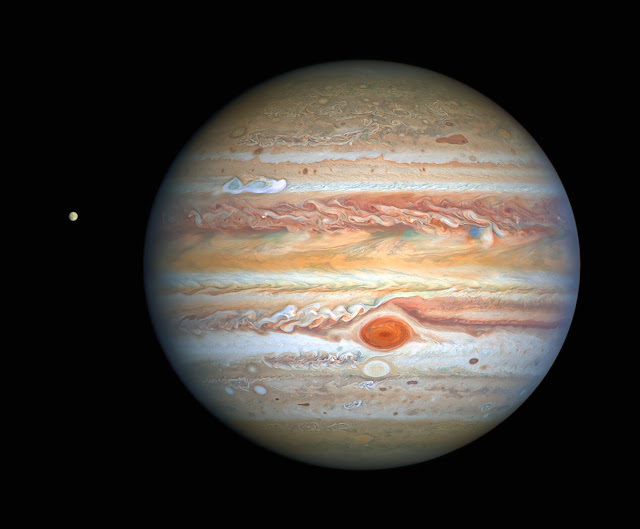Jupiter and Europa | Hubble
Learn more about NASA's upcoming Europa Clipper Mission—Earth's first mission to conduct detailed reconnaissance of Jupiter's moon, Europa. Scientists are almost certain that a vast ocean (larger than Earth's) lies beneath Europa's icy shell:
Europa Clipper is an interplanetary mission in development by NASA consisting of an orbiter. Currently planned for launch in October 2024, the spacecraft will study the Galilean moon Europa through a series of flybys while in orbit around Jupiter.
Europa Clipper will perform follow-up studies to those made by NASA's Galileo spacecraft during its nearly eight years in Jupiter orbit (1995-2003), which indicated the existence of a subsurface ocean underneath Europa's ice crust. Due to the adverse effects of radiation from Jupiter's magnetosphere in Europa orbit, it was decided that it would be safer to inject a spacecraft into an elliptical orbit around Jupiter and make 44 close flybys of the moon. The mission began as a joint investigation between the Jet Propulsion Laboratory (JPL) and the Applied Physics Laboratory (APL), and will be built with a scientific payload of nine instruments contributed by JPL, APL, Southwest Research Institute, University of Texas at Austin, Arizona State University and University of Colorado Boulder.
The mission will complement the European Space Agency's Jupiter Icy Moons Explorer (JUICE) launching in 2022, which will fly-by Europa twice and Callisto multiple times before moving into orbit around Ganymede.
Credit:
NASA, ESA, A. Simon (Goddard Space Flight Center), and M. H. Wong (University of California, Berkeley) and the OPAL team.
Image Date: August 25, 2020
#NASA #Astronomy #Hubble #Telescope #Space #Science #Jupiter #Europa #Moon #Ocean #Astrobiology #Biosignatures #Habitability #Radiation #EuropaClipper #ESA #JUICE #Spacecraft #SolarSystem #Exploration #JPL #Goddard #GSFC #STScI #UnitedStates #STEM #Education

No comments:
Post a Comment